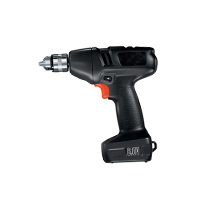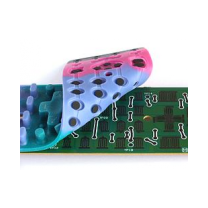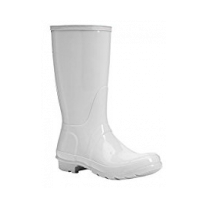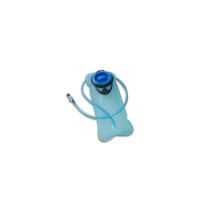Difrencia between SEBS vs. SEEPS
Thermoplastics > Styrenics
| Difference between SEBS vs. SEEPS | ||||||||
In terms of structure SEPS and SEEPS are a series of hydrogenated styrenic block copolymers (HSBC) based on elastomers is a hydrogenated isoprene. With hard blocks based on styrene and a soft block based on diene, which has properties similar to rubber in a wide range of temperatures and hardness. The structure of SEEPS is similar to the structures of SBS and SEBS, except for the soft block and they are high-performance thermoplastic elastomers. There is a variety of SEEPS grades, from low styrene content (soft) to high styrene content (rigid), from low molecular weight (high flow) to high molecular weight (more rubber-light properties) and also different block structures soft (ethylene propylene (EP), ethylene butylene (EB) and ethylene ethylene propylene (EEP)). Using synthetic technologies offers a variety of qualities, from low styrene (soft) to high styrene (rigid) content, and low molecular weight (high flow) to high molecular weight (more rubber-like properties). Also, in terms of flexible block structure, there are three different types, SEPS, SEBS and SEEPS. Regarding the structure of the blocks, the SEBS is the most popular type among the hydrogenated styrenic block copolymers. |  | |||||||
| Molecular weight MW | ||||||||
A wide spectrum of products is available from high to high and ultra-high molecular weight grades, as well as grades for dynamic cross-linking. The crosslinking takes place in the central elastic block and the rigid end block, giving rise to previously unattainable properties. Compared with the standard grades of high molecular weight the very high molecular weight grades show better compression. In addition, in the manufacture of compounds, even the low molecular weight process oil can be used to maintain moderate properties similar to rubber, although the high molecular weight process oil is recommended for standard grades of high molecular weight. Those advantages of super high weight grades become more evident at higher temperatures. The improvement of the tensile strength of the SEEPS, with respect to the SEBS, is also evident in the compound with polypropylene PP and oil. The SEEPS has a greater resistance to ozone and a lower content of gels and a better abrasion. Another hallmark of SEEPS is its better ability to treat paraffinic oil, lower evaporation and oil migration compared to SEBS. This ability to treat paraffinic oil refers to the maximum amount that can be absorbed without creating an oil phase. The viscoelastic properties of the mixtures of paraffinic oils with SEEPS change with the content and MW molecular weight of the oil. | ||||||||
Symbols | ||||||||
| ||||||||
| Symbols SEEPS | ||||||||
| | |||||||
| Advantages regarding SEBS | ||||||||
| 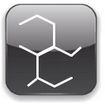 | |||||||
Physical and mechanical properties | ||||||||
SEEPS styrenic block copolymer elastomers are some of the most versatile and easy to process materials in the plastics industry. The XPRENE EP offers an excellent coefficient of surface friction, low permanent deformation, high tensile strength. While SEBS is a famous type of hydrogenated styrenic thermoplastic elastomer on the market, SEEPS is a more special grade type. Although it is a block of non-crystalline rubber, SEEPS exhibit an improvement in tensile strength compared to SEBS and SEPS due to the development of crystallinity in stretches. Also in comparison with SEBS, the SEEPS has other advantages, such as better oil retention properties, smoother, higher polyethylene affinity and better high temperature properties. SEEPS can be applied to the static purpose compared to SBS and has excellent rubber performance without vulcanization. It is well accepted that viscoelasticity is an important factor in determining the processing and final properties of these materials. Each block in these copolymers that has a particular relaxation behavior results in its complex relaxation behavior. ABA type polystyrene block copolymers, such as SBS, SEBS, exhibit fast and slow relaxation processes respectively. The first corresponds to the relaxation behavior of the hard block (PS), while the second shows the relaxation behavior of randomness. | ||||||||
Thermal properties | ||||||||
It is well known that the tensile strength and modulus of styrene- [ethylene- (ethylene-propylene)] -styrene block copolymer (SEEPS) is greater than that of styrene-butadiene-styrene block copolymer (SBS) and neither Automatic decomposition occurs beyond the glass transition temperature (Tg) of polystyrene (PS) or under extrinsic mechanical resistance, due to the existence of an intrinsic bond energy considerably high in its molecular structure. The mixtures of SEEPS have improved aging properties, even after 1000 hours at 120 ° C, the compression set of un-annealed materials is only 40%. When annealing at 120 ° C for 24 h, the values can be further improved. The glass transition temperature (Tg) of the Poly (ethylene-ethylene-co-propylene) EEP blocks is typically -60 ° C, while the Tg of the polystyrene blocks is + 100 ° C. Therefore, at any temperature between -90 ° C and + 100 ° C, SEEPS will act as a physically cross-linked elastomer. Its Tg is -32 ° C slightly higher than the SEBS -55 ° C, but with respect to the SEBS it maintains better properties at low temperature. The operating temperature is guaranteed from -30 ° C to + 100 ° C. On the other hand, the high elasticity of the rubber at room temperature and the fluidity of the resin at high temperature of SEEPS are equipped with wider applications than those of the linear SBS and star in common use. | ||||||||

